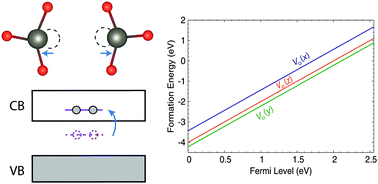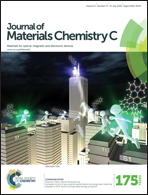Role of oxygen vacancies in crystalline WO3
Abstract
Oxygen vacancies have been invoked to explain electrochromic behavior in WO3, but the microscopic mechanism behind this phenomenon remains under debate. We use hybrid density functional theory to investigate the local atomic relaxations, formation energy, and possible charge states of the various configurations of the oxygen vacancy in the monoclinic and cubic phase of WO3. Our results indicate that the oxygen vacancy is a shallow donor, most stable in the +2 charge state (V2+O), and does not introduce deep levels in the band gap. We therefore conclude that the oxygen vacancy in WO3 simply introduces carriers to the conduction band, and discuss its implications on observed material properties, including electrical conductivity and electrochromism.


 Please wait while we load your content...
Please wait while we load your content...